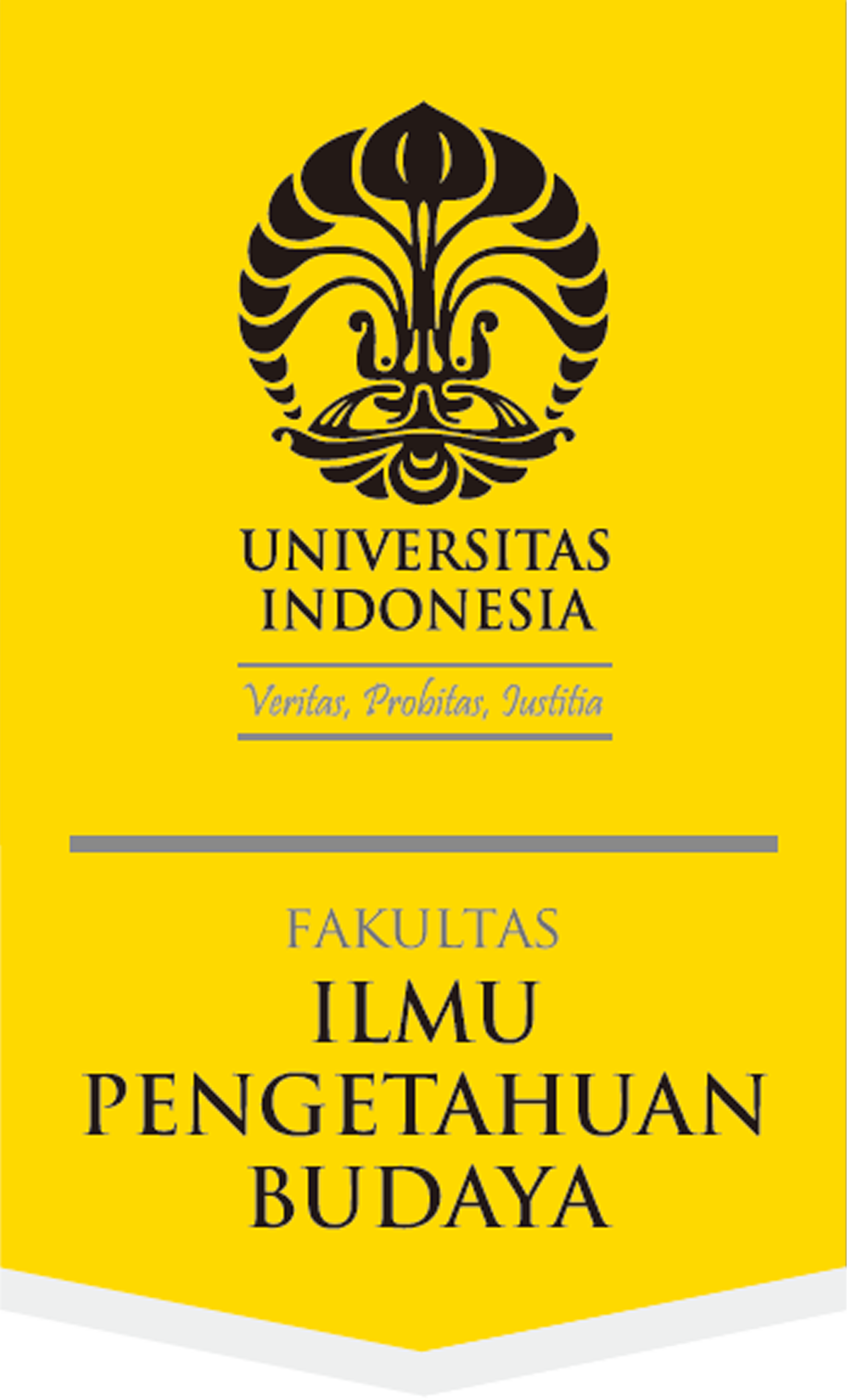Abstract
This paper attempts to trace the identity construction of the Chinese from cultural anthropology perspective. It argues that the constructed identity is always changing and very much influenced by socio, economic, political and cultural aspects. By looking at the society, the language, the kinship and belief system, it comes to a conclusion that the identity is not as simple as it looks. In fact, it often embodies a misperception of what it this to be Chinese. In this context, emphasises the needs for further development of Chinese studies in Indonesian universities.
References
Baker, H. D. R. (1979), Chinese Family and Kinship. New York: Columbia University Press.
Ch’en Ta (1940), Emigrant Communities in South China. Institute of Pacific Relations.
Cohen, M.L. (1970), “Developmental Process in the Chinese Domestic Group,” dalam Freedman M. (ed.), Family and Kinship in Chinese Society.
Fairbank, John K. (1983), The United States and China. Cambridge: Harvard University Press.
Fei Hsiao-Tung (Fei Xiao Dong) (1962), Peasant Life in China. London Routledge & Kegan Paul.
Fei Hsiao-Tung (Fei Xiao Dong) (1983), China Village Clove-up. Beijing: New World Press.
Fei Hsiao-Tung (Fei Xiao Dong) (1983-84), “On Changes in the Chinese Family Structure,” dalam D. S. K Chu (ed,), Sociology and Society in Contemporary China 1979-1983. Armonk: M. E. Sharpe.
Freedman, M. (1966), Chinese Liniage and Society: Fukien and Kwangtung. London School of Economic Monographs on Social Anthropology, 18.
Freedman, M. (1979), “Ritual Aspects of Chinese Kinship and Marriage,” dalam G. W. Skinner (ed.), And Introduction to Chinese Civilization. Stanford: Stanford University Press.
Fried M. (1973) “China: An Anthropological Overview” dalam J.T Meskill (Ed.), An Introduction to Chinese Civilization. Lexington: D.C. Heath & Company.
Jin Yao Ji (1992), Zhongguo Shihui Yu Wenhua (Masyarakat dan Kebudayaan Cina) Niu Jin Daxue Chubanshe (Niujin University Press.)
Kulp D. H. (1966), Country Life in South China. Taipei: Ch’eng-wen Publishing Company.
Lang, O. (1946), Chinese Family and Society. New Haven: Yale University Press.
Levy Jr., M.J. (1949), The Family Revolution in Modern China, Cambridfe, Mass: Harvard University Press.
Li, Dun J. (1971) The Ageless Chinese: A History. New York: Charles Schribner’s Sons.
Moser, L. J. (1985), The Chinese Mosaic: The People and Provinces of China. Boulder, Colo: Westview Press.
Parish, W. L. and M. K. Whyte (1978), Village and Family in Contemporary China. Chicago: University of Chicago.
Potter, S. H. and J. M. Potter (1990), China’s Peawants. Cambridge University Press.
Sinclair, Kevin (1987), The Forgotten Tribes of China. Missisauga, Ont: Cupress.
Tan Chee-beng (1983), “Chinese Religion in Malaysia: A General View” Asian Foklore Studies. Vol 42: 217-252.
Teuber, I. B. (1970, “The Families of Chinese Farmers,” in Freedman, M., ed., Family and Kinship in Chinese Society. Stanford: Stanford University Press.
Yang, C. K. (1965), The Chinese Family in the Communist Revolution. Cambridge, Mass: The MIT Press.
Yang, C. K. (1970), Religion in Chinese Society. Barkeley: U.C. Press.
Yang, C. K. (1973), “The Role of Religion in Chinese Society.” In Meskill, J. T., ed., An Introduction to Chinese Civilization. Lexinton, Mass: D. C. Health & Company.
Yang, M. C. (1966), A Chinese Image Taitou: Shantung Province. New York: Columbia University Press.
Recommended Citation
Gondomono, Gondomono
(2002)
"Masyarakat dan kebudayaan Cina,"
Wacana, Journal of the Humanities of Indonesia: Vol. 4:
No.
1, Article 3.
DOI: 10.17510/wjhi.v4i1.258
Available at:
https://scholarhub.ui.ac.id/wacana/vol4/iss1/3









